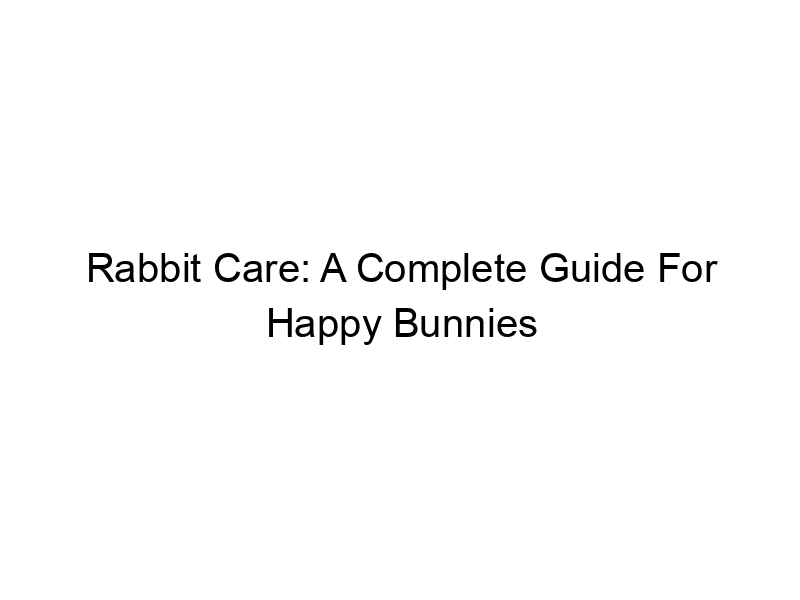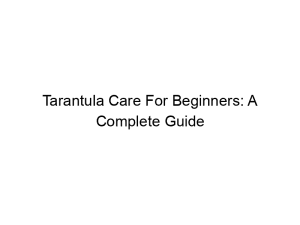Bringing a rabbit into your home is a rewarding experience, but it’s crucial to understand their unique needs. Rabbit care encompasses much more than just providing food and water; it’s about creating a safe, enriching environment that fosters their physical and emotional well-being. This comprehensive guide covers everything from choosing the right breed to addressing common health concerns, ensuring you’re well-equipped to provide your bunny with a long and happy life. You’ll learn about housing, diet, grooming, socialization, and potential health issues, helping you become a confident and responsible rabbit owner.
Many rabbit breeds exist, each with its own personality and care requirements. Some, like the Flemish Giant, are large and require more space, while others, such as the Netherland Dwarf, are smaller and more easily handled. Researching different breeds will help you select one
that best suits your lifestyle and living space. Consider factors like temperament, size, grooming needs, and potential health predispositions.
Considering Your Lifestyle
A large, energetic breed might not be suitable for a small apartment or a busy lifestyle. A smaller, calmer breed might be a better fit for a first-time owner or someone with limited space. Think about your daily routine, available time for interaction and cleaning, and overall living situation before making your decision. Are you prepared for the commitment a rabbit represents? This is a long-term decision.
Housing Your Rabbit
Choosing the Right Hutch
Your rabbit’s hutch should be spacious enough for them to comfortably hop, stretch, and play. Avoid wire-bottomed cages, as they can cause sore hocks. Solid flooring is essential. The hutch should be placed in a safe, draft-free location, away from direct sunlight and extreme temperatures. The size of the hutch depends heavily on the size of the rabbit breed; a Flemish Giant requires significantly more space than a dwarf rabbit.
Creating a Stimulating Environment
Rabbits need mental stimulation to prevent boredom and behavioral problems. Provide plenty of toys, such as chew toys (made of safe materials), tunnels, and hiding places. Rotate toys regularly to keep your rabbit engaged. A variety of textures and materials can add interest to their space. You can even incorporate cardboard boxes and toilet paper tubes (ensure they’re not toxic) to encourage exploration.
Nutrition for Your Rabbit
The Importance of a Balanced Diet
Hay should form the bulk of your rabbit’s diet (70-80%), providing essential fiber for digestion. High-quality timothy hay or orchard grass is ideal. Pellets should constitute around 15-20% of their diet. Avoid sugary, seed-based pellets that contain too many processed carbohydrates. Fresh vegetables should comprise the remaining portion of their diet. Choose leafy greens such as romaine lettuce, spinach, and kale in moderation.
Foods to Avoid
Many common human foods are toxic to rabbits. Avoid giving them chocolate, avocado, onions, garlic, and processed foods. Fruits should only be given as occasional treats, not as a main food source, because of their high sugar content. Always check resources from reputable veterinary organizations before introducing new foods to your rabbit’s diet.
Grooming Your Rabbit
Brushing and Shedding
Regular brushing is crucial, especially for long-haired breeds. It helps remove loose fur and prevents matting. Shedding occurs seasonally, and during these periods, more frequent brushing may be needed. Grooming also allows you to check for any skin abnormalities or parasites.
Nail Trimming
Rabbits’ nails need regular trimming to prevent overgrowth and discomfort. If you’re uncomfortable trimming your rabbit’s nails yourself, consult a veterinarian or a professional groomer. Overgrown nails can cause problems with posture and locomotion, affecting your rabbit’s quality of life.
Rabbit Health and Veterinary Care
Recognizing Signs of Illness
Learn to recognize common signs of illness in rabbits, such as lethargy, loss of appetite, sneezing, watery eyes, or changes in stool consistency. Early detection of health problems can greatly improve the chances of successful treatment. Don’t hesitate to contact your veterinarian if you notice any unusual changes in your rabbit’s behavior or health.
Routine Veterinary Checkups
Schedule regular checkups with a veterinarian experienced in rabbit care. Preventive care, such as vaccinations and parasite prevention, is crucial for maintaining your rabbit’s health. Your veterinarian can also provide guidance on diet, grooming, and other aspects of rabbit care.
Socializing Your Rabbit
Handling and Interaction
Gentle handling from a young age helps socialize your rabbit and build trust. Allow your rabbit to approach you at its own pace. Avoid sudden movements or loud noises that might frighten them. Positive reinforcement, such as treats and gentle petting, can help create a positive association with human interaction.
Introduction to Other Pets
Introducing a rabbit to other pets should be done gradually and carefully. Supervise all interactions closely, ensuring the safety of both your rabbit and other animals. Never leave your rabbit unsupervised with other pets, especially dogs or cats, to minimize the risk of injury. Slow introductions, using scent swapping and gradual proximity, are crucial.
Understanding Rabbit Behavior
Common Rabbit Behaviors
Understanding your rabbit’s body language is essential for interpreting their needs and emotions. Learn to recognize signs of contentment, fear, aggression, and illness through their posture, facial expressions, and vocalizations. This helps build a stronger bond and allows you to respond appropriately to their needs.
Addressing Behavioral Problems
Some common behavioral problems in rabbits include aggression, excessive chewing, and litter box issues. These often stem from underlying issues like boredom, lack of environmental enrichment, or stress. Addressing the root cause is vital. This may involve providing more toys, altering their living space, or consulting a veterinarian or rabbit behaviorist.
Litter Training Your Rabbit
Choosing the Right Litter Box
Select a litter box that’s large enough for your rabbit to comfortably move around in. Place it in a quiet corner, away from their food and water bowls. Consistency is key to successful litter training. Cleaning the litter box regularly prevents odors and encourages your rabbit to use it consistently. Different types of litter exist, so you need to find out what works best for your rabbit.
Dealing with Accidents
Accidents happen, particularly during the training process. Clean up accidents immediately using an enzymatic cleaner to remove the odor. Never punish your rabbit for accidents, as it can damage your relationship and may worsen the problem. Patience and consistency are key to successfully litter training your rabbit.
Enrichment and Exercise
Providing Mental Stimulation
Rabbits need mental and physical stimulation to prevent boredom and behavioral problems. Provide a variety of toys, puzzles, and foraging opportunities to keep them engaged. This might involve hiding treats around their enclosure or using food puzzles to encourage problem-solving.
Exercise and Playtime
Daily exercise is essential for a rabbit’s physical and mental health. Supervise playtime outside their hutch to prevent escape and ensure their safety. A safe, enclosed area is needed, free from potential hazards. Regular exercise helps maintain healthy weight and reduces the risk of behavioral issues.
Rabbit-Proofing Your Home
Identifying Potential Hazards
Rabbits are curious and can chew on anything they can reach. Rabbit-proof your home by removing or securing any potential hazards, such as electrical cords, toxic plants, and small objects that they could swallow. Remember, even seemingly innocuous items can be dangerous if ingested.
Creating a Safe Space
Designate a safe area in your home where your rabbit can freely roam and explore. This area should be free from hazards and provide plenty of space for play and exercise. Ensure your rabbit has a secure space to retreat to when feeling overwhelmed or scared.
Understanding Rabbit Sounds
Decoding Rabbit Communication
Rabbits communicate through a variety of sounds, including thumping their feet, grinding their teeth, and making various vocalizations. Understanding these sounds helps you interpret their mood and needs. Learning these signals lets you address their concerns and react appropriately.
Interpreting Body Language
Body language is another important aspect of understanding rabbit communication. Observe their posture, ear position, and facial expressions to get a better understanding of their emotional state. This includes understanding when your rabbit is feeling content, fearful, stressed, or aggressive.
Frequently Asked Questions
What is the average lifespan of a rabbit?
The average lifespan of a domestic rabbit is 8-12 years, but some can live even longer with proper care. Providing a healthy diet, sufficient exercise, and regular veterinary checkups contributes significantly to longevity.
How much does it cost to own a rabbit?
The initial cost of acquiring a rabbit includes the purchase price, hutch, food, and other supplies. Ongoing costs involve food, hay, veterinary care, litter, and toys. Budget accordingly, and factor in potential unexpected veterinary costs.
Can rabbits live indoors or outdoors?
Rabbits can thrive both indoors and outdoors, but their housing needs differ greatly. Outdoor rabbits require weather-proof hutches and protection from predators. Indoor rabbits need a spacious enclosure and daily supervised playtime. Choose the option that best suits your lifestyle and the rabbit’s needs.
Are rabbits good pets for children?
Rabbits can make wonderful pets for children, but it’s crucial to teach children how to handle them gently and responsibly. Supervise all interactions between children and rabbits to prevent accidental injury. Children need to understand that rabbits are delicate and have specific care requirements. Rabbits are not toys; they are living creatures.
How often should I clean my rabbit’s cage?
Daily spot cleaning of the litter box and food/water bowls is necessary. A full cage cleaning, including replacing the bedding, should be done at least once a week. More frequent cleanings may be required, especially in smaller enclosures.
Final Thoughts
Owning a rabbit is a significant commitment requiring dedication, patience, and a willingness to learn. This comprehensive guide has provided a solid foundation for providing excellent rabbit care. Remember that understanding your rabbit’s unique personality, ensuring proper nutrition, maintaining a safe and stimulating environment, and providing regular veterinary care are crucial for a thriving pet rabbit. By following these guidelines, you can provide your bunny with a long, happy, and healthy life. Embrace the journey of rabbit ownership, and witness the joy and companionship these wonderful creatures bring. With attentive care and understanding, your bond with your rabbit will be truly enriching.




